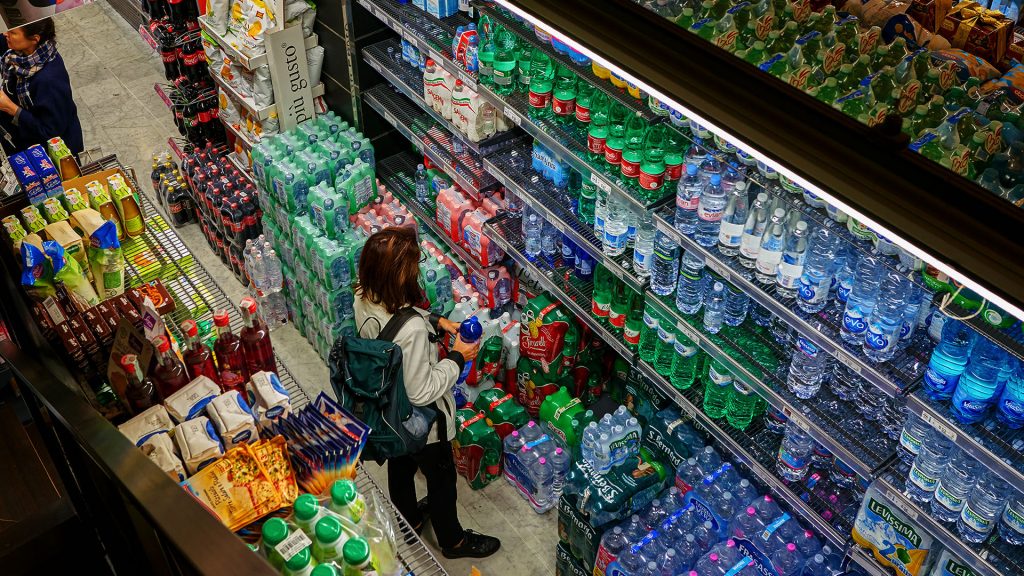Key Takeaway
Big food and FMCG brands have been working hard to keep up with changes in consumer spending habits, the impact of the internet and e-commerce growth, and all things millennials. The depth of this struggle is becoming increasingly evident as brands attempt frequent change-ups in senior management in an effort to find their way back to growth.
Large FMCG companies are facing a growth problem. According to a recent McKinsey report, from 2012 to 2015, the FMCG industry grew organic revenue at 2.5 percent net of M&A, foreign-exchange effects, and inflation. But companies with net revenue of more than $8 billion grew at only 1.5 percent (55 percent of GDP), while companies under $2 billion grew at twice the large company rate.
What this indicates is that the old model for growth which traditional brands have enjoyed until now is under major disruption – due to technology innovations and changes in consumer behavior.

Executive turnover skyrockets at packaged-food and beverage brands
It’s no surprise that times are changing for just about every stalwart industry. Thanks to the steady growth of e-commerce, the Amazon effect impacting everything from package design to pricing, and millennials’ noted lack of brand loyalty, tried and true strategies that worked in the past are no longer relevant. This is especially true in the FMCG space, where traditional giants are facing disruption from new market entrants, new channels to master and unpredictable spending habits.
One of the main indicators that big brands are being hit hard by this struggle is the high rate of attrition occurring at the executive level. This week, Unilever announced long-time CEO Paul Polman will be replaced by Alan Jope, the current head of its beauty and personal-care division. This choice indicates the significance of the brand’s higher margin beauty and personal care lines which are receiving increased focus vs the traditional food sector.
From Tyson Foods to Campbell’s Soup, to General Mills, Nestle, Hershey, Coca-Cola, Mondelez and more, nearly 20 major packaged-food and beverage senior executives have been replaced in the last 2 years, according to the Wall Street Journal. What’s the reason for such significant turnover? Leaders are struggling hard to figure out how to achieve growth in our new digital reality.
“The outgoing executives have contended with a new era of American eating and grocery shopping habits, shepherded in by millennials and the internet,” Annie Gasparro and Jacob Bunge of WSJ said.
According to Hershey’s Chief Digital Commerce Officer, Doug Straton, until now the industry trained its people on physical selling and the age-old status quo, failing to look out and missing the rise and influence of e-commerce, especially in the food space. “It’s really hard to burst out of that mindset, including for the CEOs,” he said.

As consumer preference and demand grows, and small, niche brands begin to make their mark, incumbents are struggling to become efficient in the new e-commerce marketplace. As well, investors are simultaneously demanding higher profit margins, putting executives in a tough place and resulting in an influx of fresh blood and new strategies.
Shifting consumer preferences
We saw recently Heineken’s revelation around an industry-wide struggle to master the e-commerce space, illustrating the challenges facing global alcohol brands. But they’re certainly not alone.
Rather than remaining loyal to big brands, consumers today place value on different things. Millennials in particular value that which is new, look further into a brand’s story and place significantly higher value on experience than consumption.
As well, in the US, Americans are spending more on dining out than on groceries for the first time. As Quartz points out, this is due in large part to the higher number of women in the workforce, a trend we’re not likely to see reversing anytime soon. As well, we have access to less expensive dining options and an influx of food delivery apps and meal planners.
So it’s no surprise that conglomerates are shifting to focus more on business lines which remain in demand, rather than on traditional packaged food.

More so than what we’re buying, however, is how we’re buying packaged goods when we do shop. The rise of e-commerce is throwing old strategies for a massive loop. Warehouses like Amazon demand changes in packaging and product development. Meanwhile, new entrants like Ocado and the like, which exist solely online, require FMCG brands to forge new relationships with a different type of retailer than they’ve seen before.
E-commerce has altered the customer journey and decision-making process as they engage in more research and content, read and write more reviews and seek to understand the personality of a brand through more digital touch points than ever before.
More so than ever, this requires decision-makers to have a real time and detailed understanding of the way consumers perceive and talk about their products and their competitors, and new trends arising in the industry that will impact their ability to find organic growth. We call this Outside Insight.
Emphasizing sustainability and nutrition
Particularly in the FMCG space with low-cost items, those brands making a marked effort in sustainable production are able to convince conscious shoppers to make a switch.
According to a 2017 IPSOS Global Trends report, 62% of respondents (1000+ across 23 countries) want brands to help them make a difference in the world, and say they are more likely to recommend brands that do. In fact, according to Nielsen, 66% of global consumers and 73% of global millennials are willing to pay more for sustainable products and offerings.
Companies like Unilever, Nestle and PepsiCo have long been leading the pack when it comes to understanding new customer demands for brands that take sustainability and health more seriously. Today, Unilever’s sustainable brands are the fastest-growing part of its business – up to 46% faster than others in its portfolio. As well, in recent years French brand Danone has made massive strides to make clear its efforts in sustainable production, reduction in plastic and global health through its 2030 Goals.
Meanwhile, PepsiCo has done a near about-face in recent years, investing heavily in its Healthy Snacks category. Though this had an impact in its North American beverages performance at first, it has resulted in a trend of growth.
According to Tefis Team at Forbes, “The company now derives approximately 45% of its revenues from these “Guilt Free Products” indicating that it has transformed its portfolio toward healthier products according to the new customer preferences…Consumers have been moving away from eating unhealthy products, which has put pressure on the volumes. Hence, by concentrating on premium brands, there can be a shift from low-priced, high-volume products to the high-priced, low-volume range, which may result in top and bottom line growth.”
Consumer preferences will continue to change as millennials gain spending power, small brands pop onto the scene and e-commerce continues to evolve. Those that hope to remain competitive will need to look out at rising trends and competitive strategies or risk being left behind in our new digital reality.

